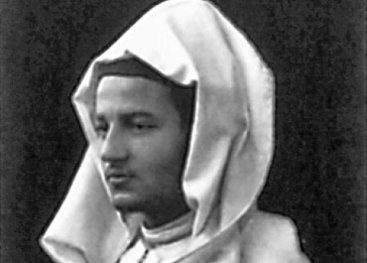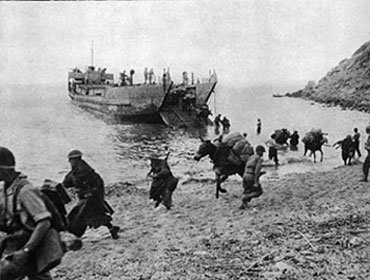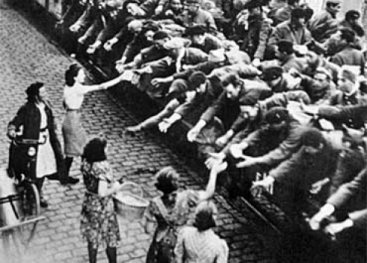
Allied invasion
Personal sight
‘At 5.45 AM sirens woke me. The noise came from airplanes. I walked with my family to the terrace. Thousands of leaflets fell from the sky. They were written in French and in Arabic with portraits of the American president Roosevelt and general Eisenhower. It read that the Americans had come with the sole purpose of beating our common enemy. Not much later we heard the sound of canons shooting. The sound came nearer. The walls of our house shook. This lasted a few hours.’
An inhabitant of Casablanca


French command joins the allied forces
On 8 November 1942 allied forces led by the Americans reach the Moroccan coast. They want to liberate the country of the pro-German administration. The Sultan supports the Allies. Many inhabitants are happy about this, especially Jews. After three days of fierce fighting the French command joins the allied forces. It will take months before the anti-Jewish laws are abolished and the prisoners are freed.
Free French Army
In January 1943 at the convention in Casablanca, the allies decide to include Moroccan soldiers in the battle for a liberated Northern Africa and Europe. They enlist with the Free French Army led by general De Gaulle. This army consists of military forces fighting the pro-German French government from outside France. The Allies expect good results from these goums, because they are excellent mountain soldiers.


